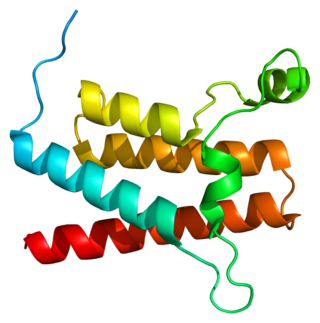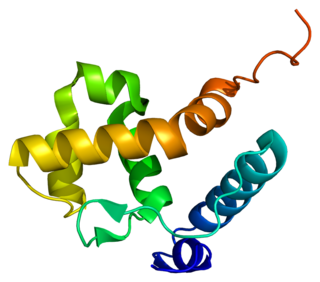RSC is a member of the ATP-dependent chromatin remodeler family. The activity of the RSC complex allows for chromatin to be remodeled by altering the structure of the nucleosome.

In molecular biology, SWI/SNF, is a subfamily of ATP-dependent chromatin remodeling complexes, which is found in eukaryotes. In other words, it is a group of proteins that associate to remodel the way DNA is packaged. This complex is composed of several proteins – products of the SWI and SNF genes, as well as other polypeptides. It possesses a DNA-stimulated ATPase activity that can destabilize histone-DNA interactions in reconstituted nucleosomes in an ATP-dependent manner, though the exact nature of this structural change is unknown. The SWI/SNF subfamily provides crucial nucleosome rearrangement, which is seen as ejection and/or sliding. The movement of nucleosomes provides easier access to the chromatin, allowing genes to be activated or repressed.

Transcription activator BRG1 also known as ATP-dependent chromatin remodeler SMARCA4 is a protein that in humans is encoded by the SMARCA4 gene.

SWI/SNF-related matrix-associated actin-dependent regulator of chromatin subfamily B member 1 is a protein that in humans is encoded by the SMARCB1 gene.

Probable global transcription activator SNF2L2 is a protein that in humans is encoded by the SMARCA2 gene.

SWI/SNF-related matrix-associated actin-dependent regulator of chromatin subfamily A member 5 is a protein that in humans is encoded by the SMARCA5 gene.

Actin-like protein 6A is a protein that in humans is encoded by the ACTL6A gene.

AT-rich interactive domain-containing protein 1A is a protein that in humans is encoded by the ARID1A gene.

SWI/SNF complex subunit SMARCC1 is a protein that in humans is encoded by the SMARCC1 gene.

SWI/SNF-related matrix-associated actin-dependent regulator of chromatin subfamily E member 1 is a protein that in humans is encoded by the SMARCE1 gene.

SWI/SNF complex subunit SMARCC2 is a protein that in humans is encoded by the SMARCC2 gene.

AT-rich interactive domain-containing protein 1B is a protein that in humans is encoded by the ARID1B gene. ARID1B is a component of the human SWI/SNF chromatin remodeling complex.

SWI/SNF-related matrix-associated actin-dependent regulator of chromatin subfamily D member 1 is a protein that in humans is encoded by the SMARCD1 gene.

SWI/SNF-related matrix-associated actin-dependent regulator of chromatin subfamily A containing DEAD/H box 1 is a protein that in humans is encoded by the SMARCAD1 gene.

Protein polybromo-1 (PB1) also known as BRG1-associated factor 180 (BAF180) is a protein that in humans is encoded by the PBRM1 gene.

Helicase SRCAP is an enzyme that in humans is encoded by the SRCAP gene.

SWI/SNF-related matrix-associated actin-dependent regulator of chromatin subfamily D member 3 is a protein that in humans is encoded by the SMARCD3 gene.

Probable global transcription activator SNF2L1 is a protein that in humans is encoded by the SMARCA1 gene.

Actin-like protein 6B is a protein that in humans is encoded by the ACTL6B gene.
Robert E. Kingston is an American biochemist who studies the functional and regulatory role nucleosomes play in gene expression, specifically during early development. After receiving his PhD (1981) and completing post-doctoral research, Kingston became an assistant professor at Massachusetts General Hospital (1985), where he started a research laboratory focused on understanding chromatin's structure with regards to transcriptional regulation. As a Harvard graduate himself, Kingston has served his alma mater through his leadership.


















